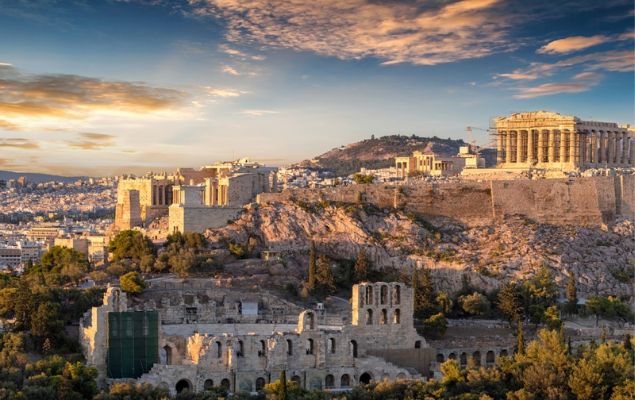Uncovering Ancient History: A Guide to Greece’s Archaeological Sites
History isn’t boring, okay? And you probably agree if you’re here, so don’t let anyone tell you otherwise. Greek

History isn’t boring, okay? And you probably agree if you’re here, so don’t let anyone tell you otherwise. Greek history in particular is the most intriguing, more often than not gory, and thus exciting. Not only that, but there’s a lot to go around, so if you’re ever in Greece, a historically important site is never more than a stone’s throw away.
Whether you’re a history buff, a curious traveler, or just someone who loves exploring new places, Greece offers some of the best archaeological sites in the world. If you’re planning your next adventure and want to step back in time, here’s your ultimate guide to uncovering ancient history in Greece.
1. The Acropolis of Athens: The Heart of Ancient Greece
There must be a reason why this ancient citadel is one of the most iconic spots on the planet. If I tell you that Acropolis was the base for the epic fight between Athena and Poseidon, would you even need another reason.
Towering over Athens, the Acropolis is home to the world-famous Parthenon, a temple dedicated to the goddess Athena. Other structures of Acropolis include Erechtheion, and Temple of Athena Nike; these are some of the best-preserved examples of ancient Greek culture and architecture. You’ll find a treasure chest of the finest artifacts at the Acropolis Museum.
2. Delphi: The Oracle’s Playground
Next up, we’re heading to Delphi, about a two-and-a-half-hour drive from Athens. The ancient site was home to the Temple of Apollo and its high priestess, the famous Oracle of Delphi, Pytho, who was said to channel prophecies from Apollo himself. Today, it’s one of Greece’s most significant archaeological sites. As you walk through the remains of the Temple of Apollo, you can almost hear the whispers of ancient priests and pilgrims who came seeking guidance (it’s not as scary as it sounds). Pro tip: Don’t miss the Delphi Archaeological Museum, which showcases the beautifully preserved sculptures and artifacts found in the area.
3. Olympia: Where the Games Began
Olympia was once a center for cultural exchange, and it still is. It was also the birthplace of the Olympic Games. It’s here that the ancient Greeks held the first Olympic Games in 776 BC, honoring Zeus, the king of the gods. The ruins of the Temple of Zeus—once home to the statue of Zeus, one of the Seven Wonders of the Ancient World—are still impressive to see, even in their broken state. In addition to the Temple of Zeus, Olympia also boasts the Temple of Hera, the Workshop of Pheidias, the stadium, and the Altis, which was a sanctuary to the gods. Don’t forget to swing by the Olympic Museum to see some ancient artifacts and learn more about the origins of the Games.
4. Knossos: The Minoan Masterpiece
For something a little different, head to Crete to explore Knossos, the largest and most significant archaeological site of the ancient Minoan civilization. Knossos is like the ancient world’s version of a palace—complete with frescoes from The Bronze Age, labyrinths, and stories of mythical creatures like the Minotaur. The palace is well-preserved and the best place to learn about the Minoan civilization. If you’re into the enigmatic, try to find the laboratory where it’s said the King of Minos kept a Minotaur. The site is located near Heraklion, so if you’re in Crete, it’s definitely worth a stop.
5. Meteora: Monasteries and Mountain Views
Meteora isn’t exactly an ancient Greek site in the traditional sense, but it’s still steeped in history and breathtaking views. Known for its dramatic rock formations and centuries-old monasteries perched on top, Meteora is one of the most stunning spots in Greece. The area has been a place of religious significance for a long time, but the monasteries were constructed in the 14th century when the monks of that time decided that a monastery on top of jagged, lone rocks for cliffs was good for meditation. And okay, they were right, you should try meditating when you’re up there, it’s a completely different experience.
Whether you’re walking through the remains of ancient temples or gazing at 500 BC artifacts that have been preserved for millennia, the experience of discovering Greece’s past is nothing short of awe-inspiring.








